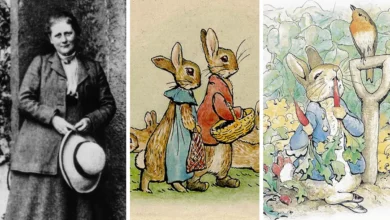Elements of Art: Value

Value serves as a pivotal element in Elements of Art: Value, influencing not just the aesthetic quality of a piece but also the emotional resonance it carries. By varying the lightness and darkness of colors, artists can create a sense of depth and focus, directing the viewer’s attention and evoking specific feelings. Techniques such as shading and cross-hatching offer a wide range of tonal possibilities, yet the implications of value extend beyond mere technique. What remains to be explored is how these variations in value can alter the narrative and meaning within a composition.
Understanding Elements of Art: Value
Value is one of the fundamental elements of art, playing a crucial role in the perception and interpretation of a work. It refers to the lightness or darkness of a color, and it is essential for creating depth, contrast, and focus within an artwork. The manipulation of value can evoke emotion and guide the viewer’s eye, enabling a deeper connection with the piece.
To understand value, one must consider the influence of light sources on the objects portrayed. Different light sources—natural sunlight, artificial lamps, or candles—create varied effects on how we perceive colors and their values.
This interplay is critical, as it determines the tonal range within a composition. The tonal range encompasses the spectrum from the darkest shadows to the brightest highlights, allowing artists to construct a dynamic visual experience.
Read Also: Elements of Art: Line Examples
Techniques for Creating Value
Understanding the various techniques for creating value is essential for artists aiming to enhance the visual impact of their work. Value refers to the lightness or darkness of a color, and mastering its creation can significantly elevate the depth and dimension of an artwork.
One effective approach to establishing value is through hatching techniques, where parallel lines are drawn close together to create varying densities. By adjusting the spacing and direction of these lines, artists can convey subtle gradations of light and shadow.
Cross-hatching, which involves overlapping sets of parallel lines, further enriches this effect, allowing for more complex tonal variations.
Shading methods also play a crucial role in creating value. Techniques such as blending, where colors are smoothly transitioned, can provide a softer appearance, ideal for realistic representations.
Alternatively, stippling employs small dots to build up value gradually, offering a unique texture and depth.
Experimenting with these techniques enables artists to find their distinctive voice in expressing value. Ultimately, the freedom to explore and combine various methods empowers creators to develop their skills and forge a personal connection with their audience through the evocative power of value.

Value’s Impact on Composition
The manipulation of value significantly influences the overall composition of an artwork, guiding the viewer’s eye and conveying mood. Value contrast, the juxtaposition of light and dark tones, plays a pivotal role in creating focal points and directing attention within a piece. By strategically employing value contrast, artists can draw the viewer’s gaze to specific areas, emphasizing elements that are crucial to the narrative or emotional impact of the work.
Moreover, value affects the emotional resonance of an artwork. Lighter values often evoke feelings of openness, serenity, or joy, while darker values can elicit emotions of drama, tension, or melancholy. This inherent relationship between value and emotion allows artists to manipulate visual perception, creating a compelling dialogue that resonates with the audience on a deeper level.
In essence, understanding the impact of value on composition empowers artists to craft more engaging and dynamic works. By thoughtfully considering how value interacts with other elements of art, creators can unlock new dimensions of expression, inviting viewers to experience their vision with both freedom and depth.
Thus, value emerges as an essential tool in the art of composition.
Read Also: Elements of Art: Color
Conclusion
In summary, Elements of Art: Value serves as the backbone of artistic expression, orchestrating light and shadow to evoke emotion and guide perception. Through various techniques, artists sculpt their compositions, imbuing them with depth and meaning. Ultimately, the manipulation of value transforms mere colors into a symphony of visual experience, allowing the viewer to engage with the artwork on a profound level. Thus, value remains an indispensable element, harmonizing the interplay of light and darkness in the realm of art.



